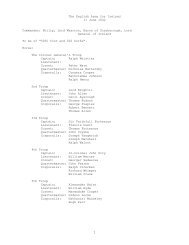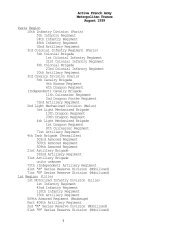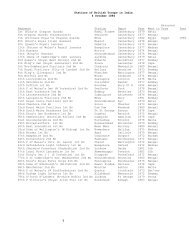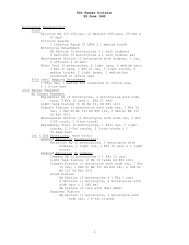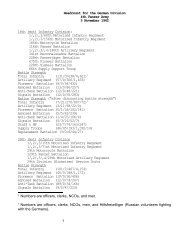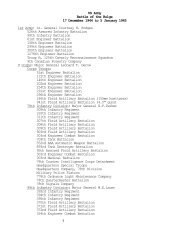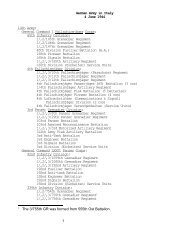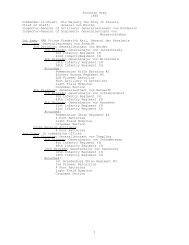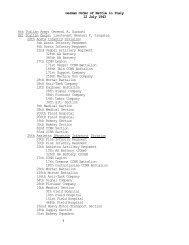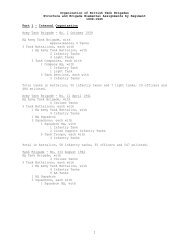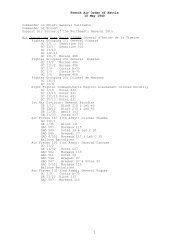Company Officer's Handbook Of The German Army - Command and ...
Company Officer's Handbook Of The German Army - Command and ...
Company Officer's Handbook Of The German Army - Command and ...
Create successful ePaper yourself
Turn your PDF publications into a flip-book with our unique Google optimized e-Paper software.
18 COMPANY OFFICER'S HANDBOOK<br />
hull-down) forward of the infantry positions. <strong>The</strong>y engaged advancing<br />
tanks <strong>and</strong> infantry, firing their machine guns as well as<br />
their heavier weapons from the halt.<br />
During the Tunisian Campaign, Tiger tanks were used effectively<br />
in the defensive, in covered <strong>and</strong> defiladed positions. <strong>The</strong>y were often<br />
employed hull-down in very difficult terrain. Light <strong>and</strong> medium<br />
tanks rarely took up good defensive positions of their own, but were<br />
employed to cover the flanks of the Tiger tanks. Medium tanks<br />
were often used in small groups to counterattack from concealed<br />
flank positions.<br />
10. DEFENSE OF TOWNS<br />
<strong>The</strong> <strong>German</strong>s regard towns <strong>and</strong> villages as excellent strongpoints,<br />
particularly if the buildings are of masonry. Towns are also regarded<br />
as excellent antitank positions because of the considerable infantryartillery<br />
effort necessary to dislodge or neutralize them.<br />
In defending a town or village, the <strong>German</strong>s locate their main<br />
line of resistance well within the built-up portion; the edges of the<br />
town are believed to be too vulnerable, <strong>and</strong> to provide easy targets<br />
for artillery fire. <strong>The</strong> main line of resistance is laid out irregularly<br />
in order to develop flanking fire, <strong>and</strong> every effort is made to conceal<br />
its location until the last possible moment. Furthermore, minor<br />
strongpoints are maintained forward of the line in order to break<br />
up attacks <strong>and</strong> to provide additional flanking fire. Cul-de-sacs are<br />
organized <strong>and</strong> attempts are made to trap attacking forces in them,<br />
<strong>and</strong> to destroy them by counterattacks launched by mobile reserves.<br />
<strong>The</strong> reserves are held in readiness within the town itself;<br />
other reserves are held outside the town to prevent attacking forces<br />
from carrying out flanking action.<br />
In organizing the defended positions, both occupied <strong>and</strong> unoccupied<br />
buildings are booby-trapped. <strong>The</strong> entrances to buildings are<br />
blocked up. All windows are opened so as not to disclose those from<br />
which fire is maintained. Rooms are darkened <strong>and</strong> passages are<br />
cut in the walls between buildings. Communication is maintained<br />
through cellars <strong>and</strong> over roofs. To avoid detection, the <strong>German</strong>s fire<br />
from the middle of the rooms, <strong>and</strong> frequently change their positions.<br />
Machine guns are sited low, usually in basements, to provide



